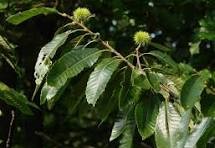GMU:Life in an aquatic ecosystem/Ecosystem of the pond in Ilm park: Difference between revisions
mNo edit summary |
|||
| Line 1: | Line 1: | ||
[[File:January.jpg|center|thumb|441x441px|January 2025]] | |||
<small>The ecosystem of the pond we investigate is located in the Ilm Park, that is a 48-hectare landscape park on the edge of Weimar's Old Town. It was gained from nature and further shaped between 1778 and 1828. The park contains valuable trees, mostly local varieties (Some imported from southern Germany), but also some foreign trees, especially from North America; bushes were also planted.</small> | <small>The ecosystem of the pond we investigate is located in the Ilm Park, that is a 48-hectare landscape park on the edge of Weimar's Old Town. It was gained from nature and further shaped between 1778 and 1828. The park contains valuable trees, mostly local varieties (Some imported from southern Germany), but also some foreign trees, especially from North America; bushes were also planted.</small> | ||
Revision as of 18:21, 26 January 2025
The ecosystem of the pond we investigate is located in the Ilm Park, that is a 48-hectare landscape park on the edge of Weimar's Old Town. It was gained from nature and further shaped between 1778 and 1828. The park contains valuable trees, mostly local varieties (Some imported from southern Germany), but also some foreign trees, especially from North America; bushes were also planted.
- Klassik Stiftung Weimar
- Wikipedia, https://en.wikipedia.org/wiki/Park_an_der_Ilm
The Pond
The pond ecosystem in Ilm Park, Weimar, is a rich and diverse environment that supports various organisms and ecological interactions.
The ponds in the Park are in two different categories:
They are formed either by Ilm River water overflowing into puddles or by rainwater collecting. The first group has clearer and deeper water due to the fact that some of them are flowing and have fewer microbial organisms/microbiomes living in them.
In our research, we initially studied both ponds and compared them together.
We selected the rainwater pond for educational purposes and analysed the microbiomes collected from various depth of the pond and at different times throughout the winter.
As temperatures dropped, we observed a decrease in algae count in all the samples collected from various areas of the pond.
In January, the pond naturally contained significantly more water compared to autumn and it could be one reason for this, also Algae rest and less produce during the cold weather.
On the other hand, in winter most leaves had already decomposed into organic matter and settled at the bottom and this left the surface more exposed; That cover on the surface no longer exist to protect algae from too much sunlight, cold and tiny animals.
Consequently, we noticed that the number of algae around the edges and beneath the plants are significantly higher than other areas, such as the centre of the pond, which experiences greater temperature fluctuations, freezing, direct sunlight, water current and less food; or in the muddy part that is too dark and tick for algae to move or prevent them getting enough light.
Additionally, both the clear areas and muddy sections of the pond have fewer microbiomes in autumn and winter, both. Whereas, in general we found more organic matter and microbiomes in the shallow parts of the pond, particularly around the edges, where the water is less clear.
In these areas, algae can likely settle during colder weather, as they have access to food that remains stable despite water currents, allowing them to thrive in an environment with more consistent temperatures.
Trees
Above the pond, there are so many trees, that their leaves fall down on the surface of the water and makes a richer, warmer, safer environment for microbiomes, and there are places with the greatest number of algae.
Based on the shape of the leaves, there are a lot of Chestnut trees above the mentioned pond. (American Chestnut; American or Allegheny chinkapin, also known as "dwarf chestnut"/ Castanea Pumila)
furthermore, from the Hight and the smoothness of the Chestnut tree’s barks, (The smoother, the younger) we can say they have been probably planted there since the park was built; maybe dislocated them from the southwestern Germany, because they are generally warmth- and light-loving tree species.
On the other hand, the fruit contains a lot of minerals and vitamins such as Magnesium, Copper, Iron, Potassium, Folate, Protein, Calcium...that are the best source for food.
The soil around the area is a dark built-up mud and light-weight, showing it has been a part of the pond before it dried up, while a tick layer of decomposed leaves is on top of it.
It has been likely connected to the other pond on the other side, while getting water from the river, long time ago before it dried up.
Also, their seeds can naturally be rooted better in water, where the soil is so soft and they have time to make roots. So, we can observe more young Chestnut trees were used to be a part of the pond recently, compare to other areas that has been dried up long time ago.
Another observation is, a lot of common Sunburst Lichen on the tree barks and branches.
There is also different type of grass, such as Wood Meadow-Grass, Poa Parenesis, Vetiver-Grass, ....
Wildlife
There are a vast variety of wild life in Weimar, which a lot of them live in the parks and natural areas; Birds such as Eurasian Blue Tit, Carrion Crow, Eurasian Jay, Great Tit, Goldcrest, Hawfinch, common Merganser, Green Woodpecker, European robin, Mute Swan ...
Small animals like Eurasian red Squirrel, European Toad,
Insects like European firebug, Forest Bug, Brown Marmorated Stink Bug, Asian Lady Beetle, Black Oil Beetle, Common Blue butterfly, Common Carder Bumble Bee, ...
https://ebird.org/region/DE-TH-WE/bird-list?yr=cur
https://www.inaturalist.org/places/weimar








